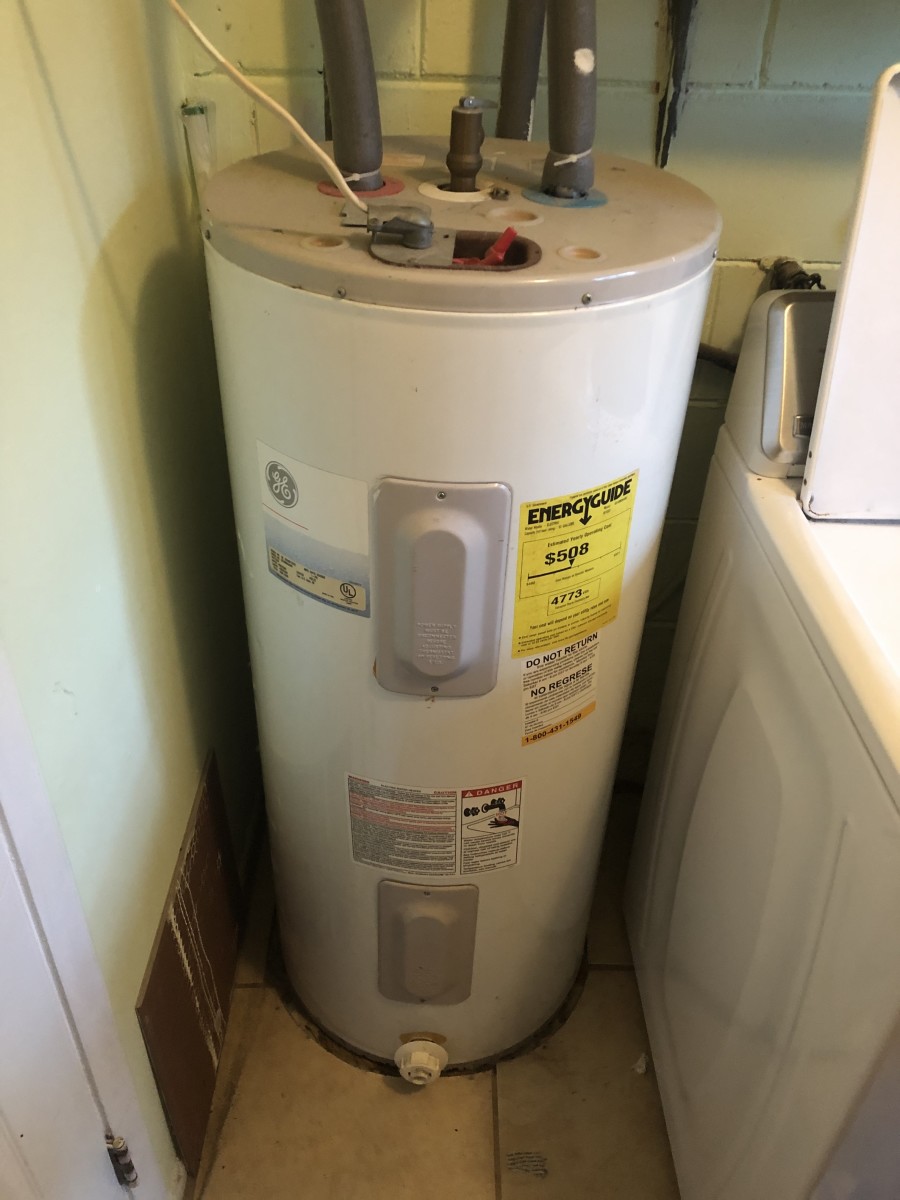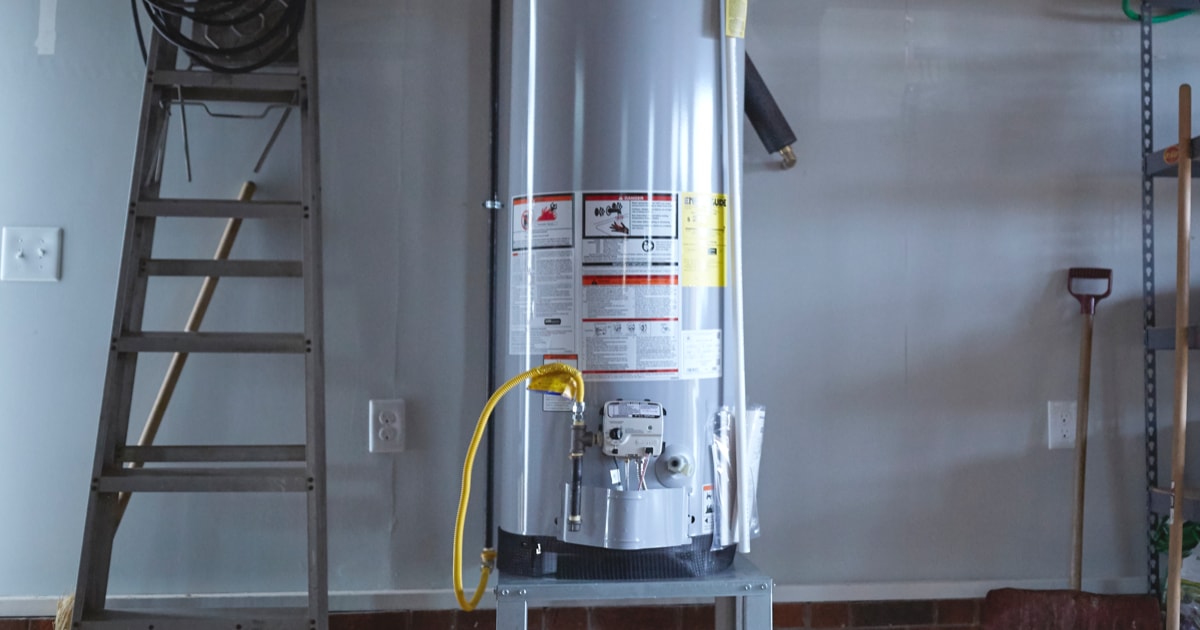Crucial Procedures for Residential Property Owners Managing Broken Heating Units
Crucial Procedures for Residential Property Owners Managing Broken Heating Units
Blog Article
Listed here in the next paragraph you can get lots of sensible insight pertaining to Water Heater Burst.

Whether it lies in the cellar or a separate space, damaged hot water heater can create stress. A conventional unit holds 80 gallons, so an overnight leakage will certainly cause a flood. This results in significant property damages with drenched wall surfaces as well as floorings. Having no warm water supply is additionally troublesome. If you are dealing with these concerns, make note of the following:
Call the Plumber
After doing the first two security actions, you have to call your plumber to find as soon as possible to deal with a ruptured hot water heater. Bear in mind that your device will not simply conk out substantially overnight. There are typically indications that your aging water heater has debris accumulation in the interior. Keep in mind of the following:
Don't wait on significant flooding to call the plumber. Already, you will have to spend even more to recover your residential property. Rather, as soon as you detect these signs, have actually a professional pertained to evaluate your water heater tank. Generally, water heaters have a life-span of concerning 8 to 12 years. With regular evaluation as well as maintenance, you can prolong its life.
Cut Off the Cold Water Supply
Cut off the storage tanks tap water supply from the source. When your container is in good problem, the cool water stops filling up when the storage tank is full. If you can not locate it or reach it, you have to turn off that main water supply line outside your residential property.
Shut Off Source Of Power
Before calling the plumber, turned off a gas hot water heater by transforming the temperature dial. This is usually found on top of the thermostat. If you have a design that works on electric power, switch off the breaker. This will certainly prevent electrocution, particularly if there is a leakage as water is a conductor. Generally, the heating element turns off when the water strikes a specific temperature. But with a damaged container, it might malfunction. Sufficing off guarantees you stay safe.
Tidy up Building
After calling the plumber, record damages by remembering and also images so you can assert your property owner's insurance policy. From there, begin the instant cleanup. Obtain any kind of vital items to stop additional soaking. Get rid of any standing water to protect against mold as well as mold growth. Utilize that to drain the water if you have a submersible water pump. Or else, the conventional container technique will certainly additionally function. Attempt to wipe out every little thing, including baseboards and also wall surfaces. If you have an electrical fan as well as dehumidifier, keep them running to keep air circulating. This will certainly assist deter mold and mildew development.
Bear in mind, if you notice any issues with your water heating system, call the pros right away. You can not take this problem lightly due to the fact that a faulty thermostat can raise water temperature to a dangerously high degree, leading to accidental burns.
After doing the initial two safety steps, you have to call your plumber to come right away to take care of a burst water heater. Rather, as soon as you detect these indications, have a specialist come to examine your water heating system storage tank. Prior to calling the plumber, shut off a gas water heater by turning the temperature dial. If you have a completely submersible water pump, make use of that to drain pipes the water. Keep in mind, if you discover any issues with your water heating system, call the pros right away.
8 REASONS YOUR HOT WATER HEATER IS NOT WORKING & HOW TO FIX
Water Heater Problems & Solutions
Loose or Damaged In-Line Valve
Unlike a water leak near the bottom of your water tank, a water leak on top of your system can be easily fixed. A common cause of water tank leaks includes a loose in-line valve. This is a handle that is located at the top of the water tank that is engineered to activate or deactivate the flow of water. To fix this problem, you will need to secure the nut that holds the ball or in-line valve in its location. If the leak becomes more severe once it is tightened, you will be required to travel to your local hardware store to purchase a new in-line valve for your water heater.
Damaged Pressure Relief Valve
Most types of water heaters are equipped with a pressure relief valve that is engineered to discharge pressure from the water tank when it becomes too high. If this valve on top of your water heater begins to leak, we recommend purchasing a new one online or from your local store. The process of removing and replacing pressure relief valves is not complicated.
No Warm Water
If you have an electric water heater in your home, the most typical cause of a lack of warm water is a broken heating element. Your water heater is equipped with two heating elements that are tasked with heating incoming water in the water tank. Once a heating element begins to malfunction, you will have little to no hot water to use for showering, cleaning, and laundry.
Low Supply of Hot Water
Are you continuously running out of warm water? This issue may be a byproduct of a cracked dip tube. This tube is engineered to push cold water to the base of your water tank to be heated. Once a crack or hole begins to form in the dip tube, the incoming supply of cold water may be released near the top or middle of your tank. As a result, the cold water on top of the tank will be sent to the faucets and showers in your house. This hot water heater problem can only be fixed by replacing the dip tube on your system. Since the process of installing a new dip tube is complex, we recommend calling a certified technician for help.
A low supply of warm water may also be a signal of excess sediment buildup in your water tank. As your water heater reaches the middle of its life cycle, minerals in water including magnesium and calcium will begin to collect at the base of the water tank. As the minerals continue to grow, there will be less room in the water tank to store hot water. To resolve this problem, flush your water heater to remove the excess minerals.
Water is Too Warm or Cold
If the water in your shower feels uncomfortable hot or cold, you can adjust the temperature of your water by changing the settings on your thermostat. Setting the temperature to 120 degrees Fahrenheit may help you save money on your utility bills. This is an excellent temperature to use if you’re worried about scalding or skin irritation. Does this temperature feel too cold? You may also adjust the thermostat to 140 degrees Fahrenheit to make your showers more pleasant. If your hot water heater is not working when you change the temperature, this is an indicator of a broken thermostat. Immediately find a certified plumbing or heating contractor in your area to repair or replace your thermostat.
Low Water Pressure
Low water pressure is not always caused by a malfunctioning water heater. If you live in an older home with smaller water pipes, the flow of water will be restricted prior to reaching our kitchen or bathroom skins. The only way to eliminate this hot water heater problem is to connect new ¾-inch water lines to your system. Another type of problem that may negatively impact your water pressure includes calcium deposits in water pipes.
As magnesium and calcium begin to form in your pipes, the diameter of your water lines will become smaller. As a result, the warm water from your water heater will not be able to travel in an efficient manner to your sinks or appliances. Since the process of replacing water pipes includes removing drywall, an average homeowner that does not have a plumbing license will not be able to fix this hot water heater problem.
https://www.wmhendersoninc.com/blog/8-reasons-your-water-heater-is-not-working-how-to-fix/

I hope you liked our section about How to Avoid a Broken Hot Water Heater. Thanks a ton for spending some time to read through our posting. Enjoyed reading our review? Please share it. Let someone else locate it. We truly appreciate reading our article about How to Avoid a Broken Hot Water Heater.
Quick resolutions for plumbing disruptions. Report this page